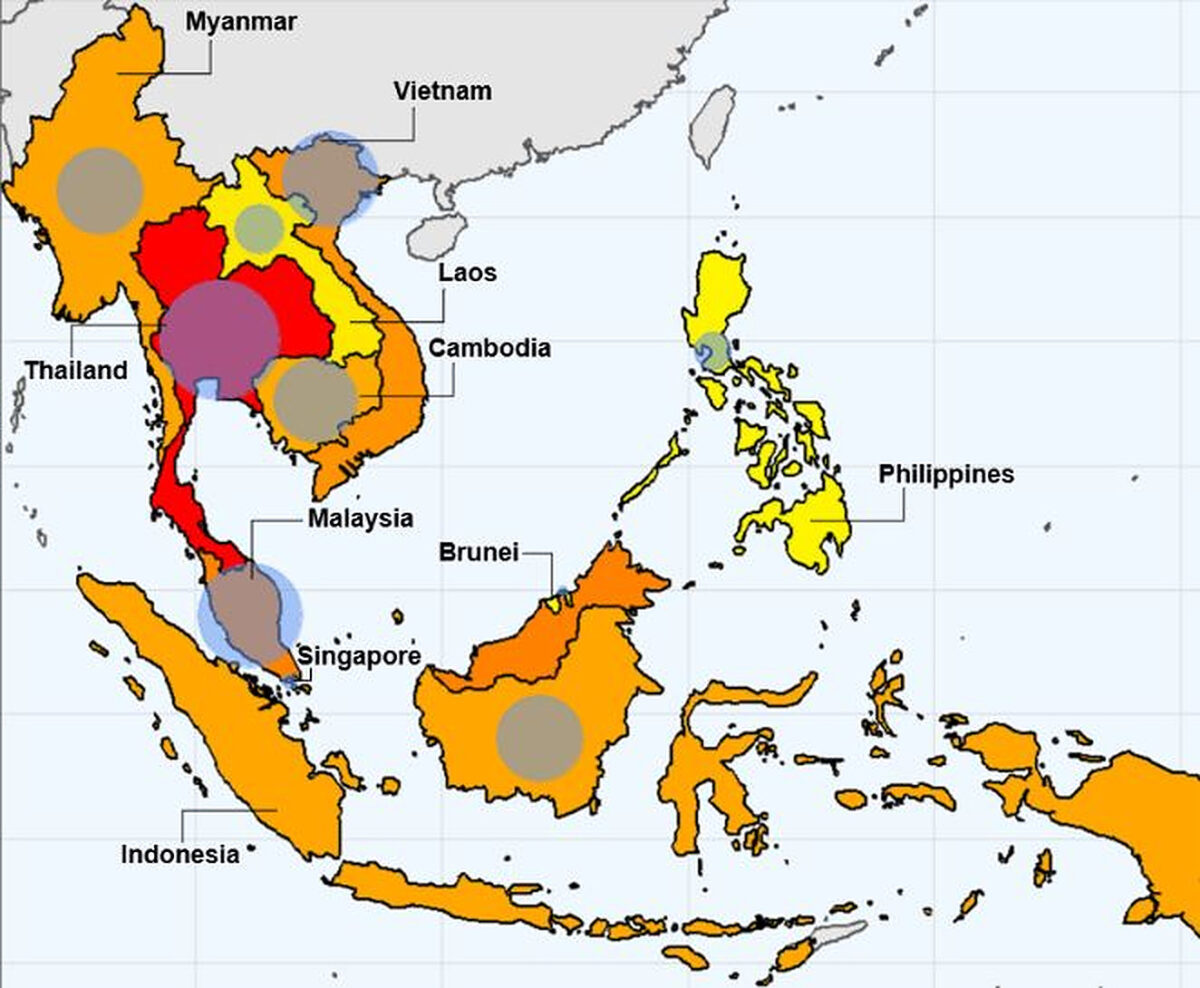From pv magazine Global
Researchers from the National Renewable Energy Laboratory (NREL) in the US have analysed the technical potential for floating PV (FPV) in the 10 countries that are part of the Association of Southeast Asian Nations (ASEAN). The assessment, which is the first-of-its-kind for Southeast Asia, included 88 reservoirs, including hydropower and non-hydropower facilities, and 7,213 natural waterbodies in the final dataset.
The group found that the FPV technical potential for the region ranges from 134–278 GW on reservoirs and 343–768 GW on natural waterbodies. When waterbody types are taken into consideration, the technical potential for FPV is higher on reservoirs in Laos and Malaysia, while natural waterbodies hold the greater potential in Brunei, Cambodia, Indonesia, Myanmar, the Philippines, Singapore, and Thailand. The potential is equivalent across waterbody types in Vietnam.
“Our results show that the average net capacity factor, which accounts for inverter losses, does not change significantly between the waterbody types and various distance sensitivities for monofacial panels (the average net capacity factor varied from 15.6–16.0%),” the researchers said, noting that the average net capacity factor increases by a factor of 1.05 with the use of bifacial fixed tilt panels, based on previous analyses.
NREL’s team used a high-level geospatial assessment methodology to develop a total of four technical potential scenarios based on two different FPV types – monofacial and bifacial – and two waterbody types – reservoirs and natural waterbodies. The study builds off previous research by including non-hydropower reservoirs, inland natural waterbodies, and bifacial PV panels. In addition, the group uses high temporal and spatial resolution solar irradiance data that was not available for previous technical potential assessments.
“Overall, the modelled technical potential for FPV on natural waterbodies is higher than that of reservoirs. However, the actual developable capacity on natural waterbodies might be significantly lower due to site-specific constraints and environmental impact considerations,” the academics explained, adding that waterbodies that are more than 50 km from major roads and those within protected areas were excluded from the analysis.
Thailand had the top potential for FPV on reservoirs, with 576 suitable waterbodies, a capacity of 57,645 MW, and generation of 83,781 GWh/Year. The top potential for FPV on natural waterbodies was found in Indonesia, which has 2,719 suitable waterbodies, 271,897 MW of capacity, and 369,059 GWh/year of generation.
“Overall, these findings indicate significant technical potential for FPV in each country and across the region,” the researchers said. “Several countries have ambitious renewable energy targets, mainly focused on solar, hydropower, and wind deployment. FPV presents an additional RE option that can leverage existing infrastructure, especially existing hydropower capacity, and support ongoing and increasingly ambitious decarbonisation efforts in the region.”
Their findings are available in the report “Enabling Floating Solar Photovoltaic (FPV) Deployment: FPV Technical Potential Assessment for Southeast Asia,” published on NREL’s website. The study is claimed to “help policymakers and planners better understand the role that FPV could play in meeting regional energy demand and could ultimately help inform investment decisions.”
“Detailed market and economic technical potential assessments will be needed to further assess the FPV opportunities in each country. For specific sites, detailed site-specific analysis will need to be conducted given the lack of bathymetry, wind, wave, and sediment data at a regional level,” the scientists concluded.
This content is protected by copyright and may not be reused. If you want to cooperate with us and would like to reuse some of our content, please contact: editors@pv-magazine.com.








By submitting this form you agree to pv magazine using your data for the purposes of publishing your comment.
Your personal data will only be disclosed or otherwise transmitted to third parties for the purposes of spam filtering or if this is necessary for technical maintenance of the website. Any other transfer to third parties will not take place unless this is justified on the basis of applicable data protection regulations or if pv magazine is legally obliged to do so.
You may revoke this consent at any time with effect for the future, in which case your personal data will be deleted immediately. Otherwise, your data will be deleted if pv magazine has processed your request or the purpose of data storage is fulfilled.
Further information on data privacy can be found in our Data Protection Policy.